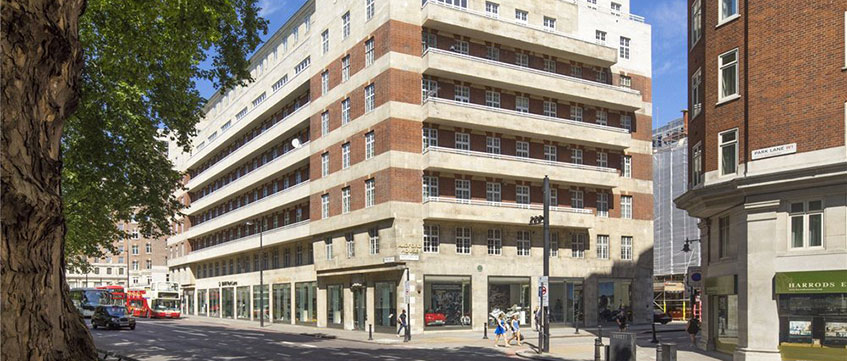The Court of Appeal has heard an appeal in a collective enfranchisement case concerning a building facing London’s Park Lane that raised the question: “What is a flat?”
Aldford House Freehold, the nominee purchaser of the participating tenants in Aldford House, Park Street, London, has appealed against a High Court ruling rejecting its collective enfranchisement claim made on their behalf.
One of the key questions in the case is how many flats there are in the building – 26, as Aldford House Freehold claimed, or 30, as maintained by the landlord. Historically, there had been a single flat on each of the sixth and seventh floors, but there were now two “flats” on each of those floors, with a set of double access doors between each “flat” which were to be removed at a later date and replaced with dividing wall. New leases had been granted in respect of each of the four “flats”, but Aldford House Freehold maintained that, on the relevant date for the claim, there were no flats on those floors.
Explaining the significance of the difference, Laura Bushaway, knowledge development lawyer at Charles Russell Speechlys LLP, said: “The High Court determined each was a separate ‘flat’ for the purposes of the [Leasehold Reform, Housing and Urban Development Act 1993]
because it had a separate identity and was precisely defined in the new leases.
“This is a slightly surprising decision given that the new flats were not genuinely ‘separate’, nor had they been fitted out with kitchens, bathrooms, pipes or cables and contained no internal walls and were effectively shells. The High Court confirmed that the test was the purpose for which the premises had been constructed or adapted and not whether they were capable of being lived in on the relevant date.
“This was an important issue in this case, as if the properties were flats then it would be necessary for more tenants to participate in the collective enfranchisement claim in order for it to meet the qualifying criteria.”
Bushaway added: “Whether a property constitutes a flat is a crucial question of wider significance, because the definition of a flat is the same for both collective enfranchisement claims and lease extension claims under the 1993 Act. So, it will be interesting to see whether or not the Court of Appeal agrees with the High Court’s decision or adopts a narrower interpretation of the meaning of a flat under the 1993 Act.”
The High Court dismissed the claim, finding that there were 30 flats in the building, which meant that the initial notice served by Aldford House Freehold had to be signed on behalf of at least 15 qualifying tenants and had to identify all the qualifying tenants in the building – but it failed to name the qualifying tenants of the additional four flats.
The Court of Appeal will rule in writing at a date to be arranged.
To send feedback, e-mail jess.harrold@egi.co.uk or tweet @estatesgazette








